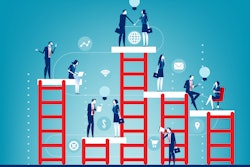
Employee engagement in warehouses is crucial for business success, driving productivity, enhancing quality and reducing costs. Yet, many companies are grappling with declining engagement levels, resulting in higher turnover rates, increased absenteeism and substantial financial losses. In fact, according to a report by Gallup and Workhuman, disengaged employees have cost businesses over $8 trillion, underscoring the urgent need for innovative strategies to reignite workforce motivation and commitment.
While businesses have come to accept employee disengagement as a new norm, there's a fix to dropping engagement levels: gamification or in other words, game-like elements in the workplace. As many companies have already witnessed, integrating gamification into warehouse operations can up employee engagement effectively, reducing absenteeism by 81%, decreasing turnover by 18% – 43% and lowering the risk of quality defects by 41%.
Gamifying processes within the warehouse can help improve productivity, increase employee wellbeing and support overall business success, infusing employees with newfound zest for their jobs.
Key Productivity Challenges in the Warehouse
79% of employees report being disengaged from their jobs – doing what they must to get by but lacking the inspiration to go above and beyond in their roles or increase their productivity. Yet, employee disengagement doesn’t happen overnight, but often, it’s an accumulation of many unspoken hurdles. Today, disengaged employees report three main challenges hindering productivity, including:
- Lack of stimulation and interaction in the workplace: For 41% of disengaged employees, they report their lack of productivity is due to feelings that their jobs are tedious and monotonous. With little day-to-day stimulation within the workplace, employees start to feel complacent, leading to productivity issues.
- Pay and benefits: When employees feel under-compensated for their work, maintaining engagement is near-impossible. Of disengaged employees, 28% report their pay and benefits trigger productivity issues. While budgetary challenges may make it difficult to offer raises or merit bonuses, small performance-based incentives could make a big difference.
- Overall well-being: Working in a stressful or potentially dangerous warehouse or factory setting can take a toll on employees mentally and physically. For 16% of disengaged employees, the lack of employer care for their well-being causes productivity issues.
Employing individual solutions to address each of these challenges can be difficult, timely, and costly for employers. However, in recent years, gamification has become a go-to solution for addressing top-of-mind productivity issues.
The Basics: What is Gamification and How Does it Solves Engagement Issues
Introducing game-like elements into warehouse operations can transform the employee experience. To start, it is important to develop a gamification strategy that includes four main elements
- Challenges: Define various objectives that align with business goals, like competing on the number of orders picked or the fewest errors. By tracking toward defined goals, employees' sense of purpose at work can be increased.
- Rewards: Outline a rewards system that motivates employees to participate, like offering extra vacation days or gift cards. Though the incentives may be small, this can help solve challenges related to pay and benefits since it offers the additional compensation many desire.
- Leaderboards: Set up leaderboards that allow employees to see how they rank and what they must achieve to earn the reward.
- Feedback: Offer feedback that fosters an environment of growth to help improve productivity on a larger scale.
By developing an effective gamification strategy, business leaders can better address employee productivity issues, offering opportunities for colleagues to grow their skills, interact with co-workers and feel satisfied in their current roles.
Benefits of Implementing Gamification
Gamification has been proven to reduce pain points caused by lack of employee engagement in warehouses, increase productivity and drive success on the floor. Four key benefits to implementing gamification include:
- Drives a Sense of Achievement: In a gamification strategy, employees no longer move from one task to the next with the lackluster goal of reaching the end of their shift. Each action they take plays a role in the game, so they see the results of their work quicker. Implementing gamification within the warehouse can increase productivity by 50%.
- Boosts Employee Engagement: When striving for a reward, employees are more present in their day-to-day activities and the feedback they receive can help them to become more efficient. In fact, gamification of certain tasks can increase employee engagement by 60%.
- Fosters Healthy Competition: On a psychological level, humans have an innate desire to win. TalentLMS’s Gamification Survey found 89% of employees felt more competitive and eager to work on tasks where gamification was implemented.
- Increases Worker Satisfaction: As discussed above, gamification solves all three critical needs employees want. By offering stimulation, interaction, rewards and well-being support, employees will feel more satisfied at work.
Many companies have already seen success when implementing gamification. For example, one logistics company was able to completely uplevel their operations taking tasks from monotonous to motivating by developing a 12-step process to promote collaborative input, integration with legacy systems and better alignment on established processes. All results point to the power of implementing gamification, especially as more and more companies are aiming to recruit younger generations, like Gen Z.
Strategizing for the Future of Gamification
Overall, developing a winning gamification strategy will lead to higher employee engagement and satisfaction, thus fostering a healthy workplace environment built for success. Employees are the foundation of the warehouse and understanding and catering to their needs through the implementation of gamification has the power to transform a business. Leaders, now is the time to adopt gamification. What are you waiting for?



















